Do you want to know the history of slant back (sloped back) modern German Shepherds, like, how, and who created the slant back German Shepherds originally, and why some German Shepherds have sloppy backs? You’re in the right place.
Some German Shepherds exhibit what is often referred to as “sloppy backs” or a more severe angulation in their hindquarters, is a result of selective breeding processes aimed at achieving certain aesthetic standards for the show ring.
The Slant Back German Shepherds also known as Showline, High Lines, and Sieger Lines, were first created by a genius breeder Walter Martin, in 1967, in his kennel Von Der Wienerau.
RELATED
- Slant Back German Shepherds | Types of Showline GSDs
- Straight Back German Shepherds | Types of Working Line GSDs
- How to Spot a Fake German Shepherd Puppy | 10 Tips
- How to Determine the Age of German Shepherd Puppy or Dog
- Are Panda German Shepherds Purebred?
- Are German Shepherds Descendants of Wolves?
- In What Ways German Shepherds Are Similar to Wolves?
- How Does Selective Breeding Affect Dog’s Appearance
Following topics will be covered in this post:
- Why Walter Martin Created Slant Back German Shepherds?
- How Walter Martin Created Slant Back German Shepherds?
- Walter Martin’s Strategy for Choosing the Right German Shepherd Breeding Partners
|| DON’T MISS! Today’s Deals on Chewy – Pet Foods, Products, Supplies, Toys and more…
01. Why Walter Martin Created Slant Back German Shepherds?
In 1953, Walter Martin started going to the shows and handling dogs. At the beginning, Walter’s priorities were more into obedient and working German Shepherd dogs but very soon he changed his mind.
Walter wanted to create a German Shepherd which should look aesthetically beautiful having deep red-brown coloring, sloppy back, and remain as close to the standard as possible.
Initially, when Walter failed to produce the intended results, his father advised him that success in breeding primarily depends on the mother. Walter kept this advice in his mind.
Walter set up the kennel “Von Der Wienerau” in September 1957 to breed German Shepherds of his own vision. He worked hard to shape the appearance of the German Shepherd based on his vision, never gave up on his goal despite facing challenges and setbacks along the way.

Initially, his vision about the German Shepherd breed sparked disagreement among others. Some breeders blamed Walter that he is significantly deviating from the original breed standard, and also, Martin brothers(Walter Martin and Herman Martin) used their influence at that time to silence the critics. However, as time passed, Walter grew confident in his vision and he continued to work.
RELATED: What is the Average Intelligence of German Shepherds?
After 10 years of strong efforts, Walter began to produce exactly what he wanted in a consistent fashion, and created slant back German Shepherds of his vision, the world famous “Quanto von der Wienerau” and “Canto von der Wienerau”, as you can see and read in the Section 2 below.
The American Kennel Club (AKC) and other kennel clubs began to include the sloped back German Shepherds in their breed standards, further cementing this trait as a desirable quality.
02. How Walter Martin Created Slant Back German Shepherds?
One day Walter Martin went to a symposium(conference) with a very famous judge from Germany. He did a seminar and gave speeches about breeding and so on. At that event Walter saw a 19 months old female dog. She was large and had extreme movement, but she was quite immature. She had normal chest, but she had a SchH3(Masters level of Schutzhund tracking, obedience, and protection).
The judge critiqued her as being a female not worthy of breeding because of the lack of substance and so on. But, Walter kept going around looking at her, and finally bought that female for 250DM (Deutsche Mark – Germany’s legal currency from 1948 to 2002). Her name was “Berta Vom Lorscher Sand”, a daughter of the famous dog “VA1 Alf vom Nordfelsen SCHH3”. According to Walter, Berta is the mother of all the dogs which are now coming from the Wienearau line.
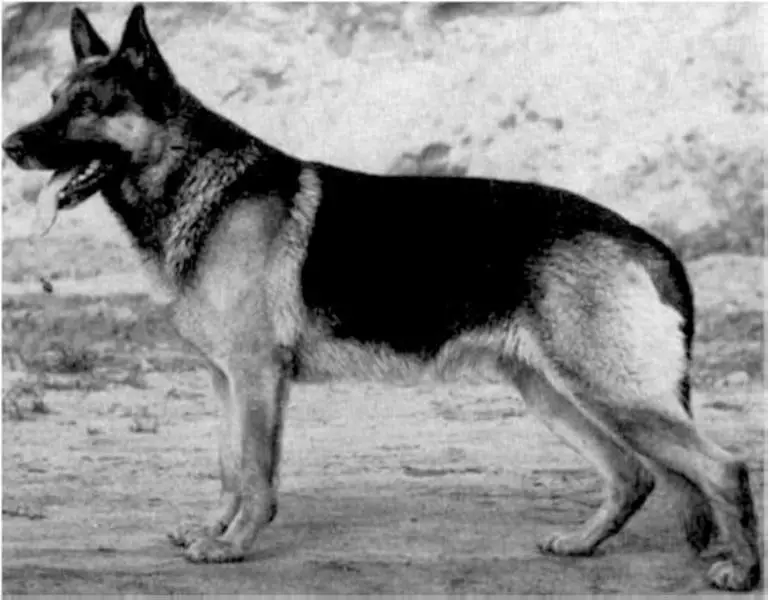
According to Pedigree Database “Berta Vom Lorscher Sand” was a large, stretched, and expressive, was in excellent condition, had very good fore and hind limb angulation, was firm, had dry bone strength, normal chest formation, firm back, and very good movement mechanism, was calm, confident nature, and had pronounced fighting instinct.
Walter started to train Berta for SchH2(Intermediate Schutzhund qualification in tracking, obedience, and protection) and SchH3. At that time Berta was the only female at the shows with a SchH3. According to Walter, he bred Berta to a dog “V Gero vom Katharinentor”, son of a very famous dog “VA3 Cäsar von der Malmannsheide”, but according to Pedigree Database Berta was bred to “VA6 Arno vom Haus Schwingel” who was the son of “VA1 Axel von der Deininghauserheide”.
RELATED
- German Shepherd Coat Color Patterns and Variations
- 4 Types of German Shepherd Coats
- What Factors Determine If Two Dog Breeds Are Compatible For Breeding?
The “V Gero vom Katharinentor” was a medium-sized, stretched, harmoniously built male with very good expression and character, had good bone strength, and sharpness and fighting instinct were impeccable. He was not suitable for bitches with forehand deficiencies or faulty forequarters.
Berta gave birth to her first Wienerau litter “Dixie von der Wienerau”- a female puppy, which later became the prototype of the Wienerau breeding.
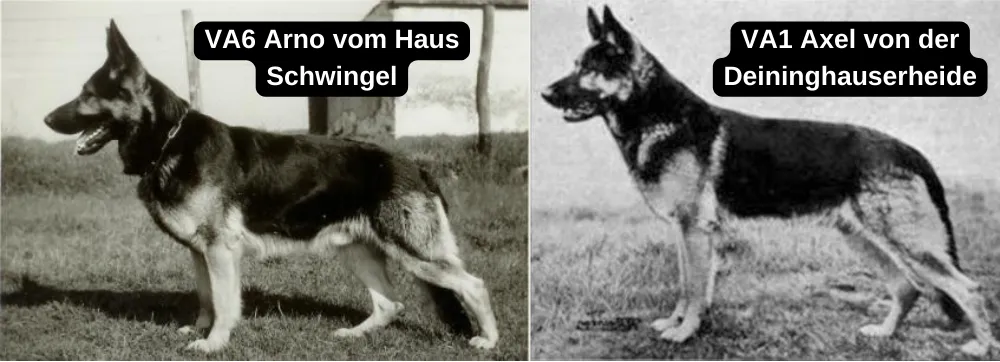
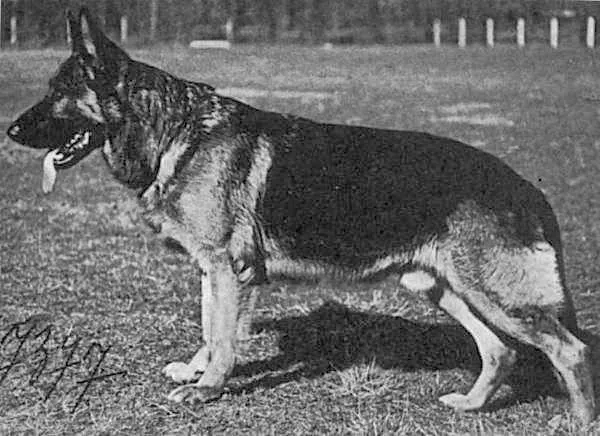
When Dixie matured into an adult female Walter Martin bred Dixie with a dog “VA2 Jalk vom Fohlenbrunnen”, as you can see below. A large, medium-heavy male, with a tight back and good angulations, good stance and expression, and had strong fighting instinct.
Out of Dixie and “VA2 Jalk vom Fohlenbrunnen” came the L-litter, Luno(male), Lido(male), Landa(female) and Liane(female). In this litter, the deep mahogany-red color appeared for the first time, which Walter thought should be the standard for the Wienerau-dogs later.
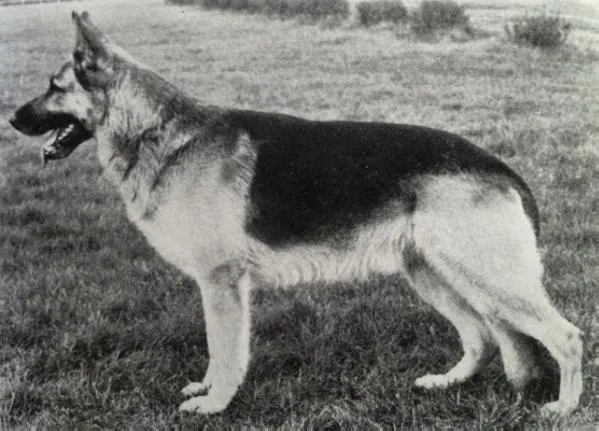
The inbreeding(the production of offspring from the mating or breeding of individuals or organisms that are closely related genetically) of Dixie(mother) with Lido(son) led to Quanto (Quanto von der Wienerau) in the first line, and in the second line breeding “V Hein vom Königsbruch” with Liane led to Canto (Canto von der Wienerau).
Lido (V1 Lido von der Wienerau) father of Quanto, was a large, full-bodied, stretched male with a harmonious structure, had very good expression, was straight, had secure nature, and strong fighting instinct.
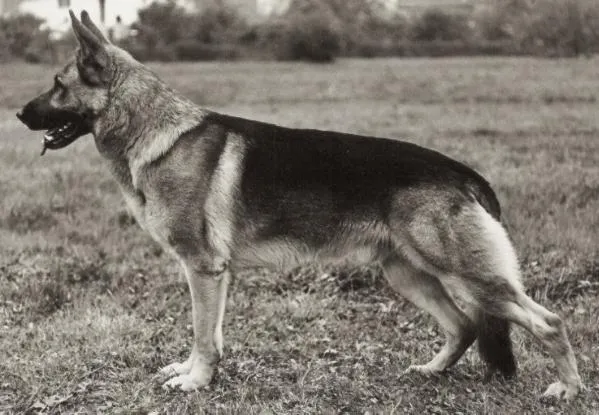
The “V Hein vom Königsbruch” father of “Canto von der Wienerau” was a large, stretched male with a harmonious body structure, and deep angulations, had very good structural strength, ideal back line and expansive gaits, and strong fighting instinct.
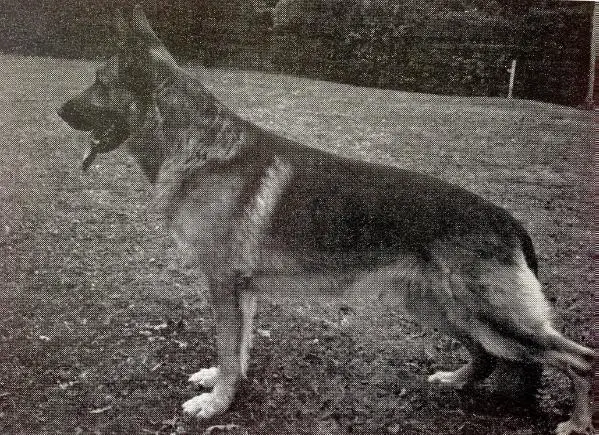
These two dogs “Quanto von der Wienerau” and “Canto von der Wienerau” probably had more influence to the German Shepherds than any other dog back in those days. They were the first slant back German Shepherds of Walter’s vision. You can see that they have more angled hindquarters and a lower back. For more than a decade one would find both dogs in almost every pedigree.
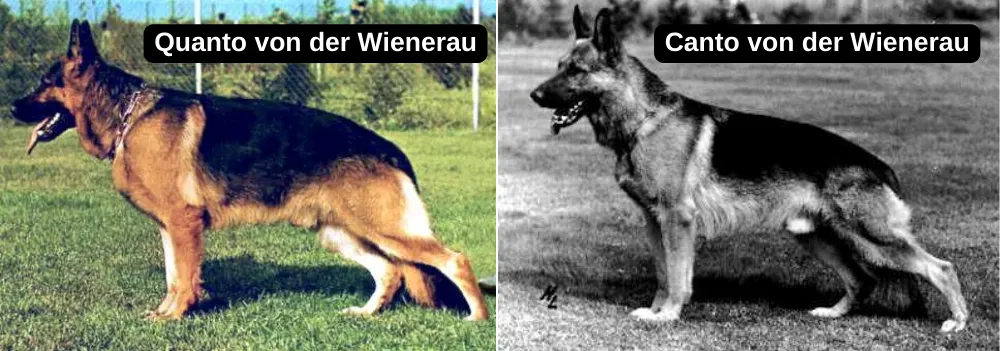
In 1992 Walter’s biggest wish came true as his kennel Wienerau’s male “Zamb von der Wienerau”, a slant back black over red German Shepherd became Sieger VA1. You can see that Zamb has more angled hindquarters and a lower back, different from traditional working line German Shepherds.
According to Pedigree Database Zamb von der Wienerau was a big, powerful, dry, firm, expressive, having good head, high withers, good topline, good croup position and length, had straight front, was well angulated at the front and back, had secure character, toughness, courage and fighting instinct.
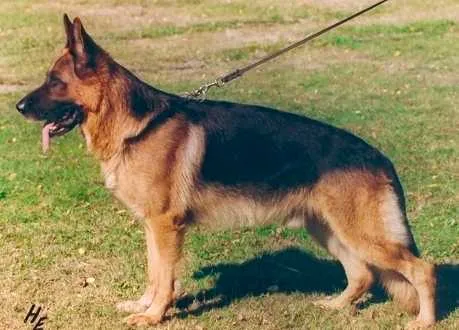
03. Walter Martin’s Strategy for Choosing the Right German Shepherd Breeding Partners
Canto and Quanto were the product of close breeding. In those times, they had the situation where two prominent sires(males) were responsible for the betterment of the breed. One, however, excelled in producing males, and the other females. Quanto was the smaller dog but with the better head, he produced the males. Canto was perhaps the nicer dog but did not had a better head like Quanto, he gave the breed many, very nice females.
How Walter Martin Would Choose Breeding Partners to Produce Good Quality German Shepherds
Walter Martin believed that you cannot always breed very good character together, if you only breed dogs with nice, easygoing dispositions, after three generations you get only dogs that are so nice and kind and so quiet and perfect that they never like to work and never like to run in the shows.
In every third generation you must bring in an absolute “idiot” dog, one with very quick blood, a wild one. This is very good for the working aspect of the Shepherd.
One must buy a dog from a very, very good breeder, born from a very good mother, but the worst female puppy. Then breed this female to the best dog possible and select the one with the best character and anatomy.
One must do not fall into the trap of selecting dogs on the bases of performance only. For example, you may have two dogs, one has the best genes for working but has a very bad trainer, the other one may have very bad genes for working but has a very excellent trainer. There is higher probability that dog trained by excellent trainer gets the maximum points, despite having bad genes.
Always remember that the breed is built from good genes, not from good training.
Final Thoughts
So it must be clear now that how slant back German Shepherds were created originally and why some German Shepherds have slant backs. These dogs are so popular that among all dog breeds people can easily identify them as German Shepherds without mentioning showline or workingline – the slope and traditional colors contributes to the breed’s iconic appearance. Whether one likes Walter Martin’s vision or not, there is no shame to say that he was damn genius and way ahead of his time.
Most importantly when you read the details of the dogs that he had used to produce slant back German Shepherds over the years, you come to know that all dogs were physically fit and champions. In his breeding strategy, alongside appearance, he has also focused on dog’s temperament and working abilities.
Despite the massive popularity of showline German Shepherds, the “sloped back” has been a topic of controversy. Critics argue that the exaggerated slope can lead to health issues, such as hip dysplasia and spinal problems, impacting the dog’s overall well-being and ability to perform traditional working roles. As a result, there has been a growing movement among some breeders to return to the original German Shepherd breed standard, focusing on functional abilities over aesthetic qualities.
The proponents of the sloped back, on the other hand, maintain that when not exaggerated, the slope contributes to the breed’s iconic appearance and does not necessarily impede the dog’s health or functionality, as long as breeding is done responsibly.
The Showline German Shepherds roles are not limited to family dogs, show dogs, shepherd dogs, or guardian dogs, they can also excel in other roles such as rescue operations, patrolling, searching, police work, disability assistance, etc.
If you like this post then don’t forget to share with other people. Share your feedback in the comment section below.
Also Read
- A Guide for Raising German Shepherd Puppy at Home
- How to Know German Shepherd Puppy is Male or Female | Gender
- Is White German Shepherd a Good Family Dog?
RESOURCE REFERENCES
- Michael Rosén, the grandson of Walter Martin wrote the article “The History of the Kennel – Von Der Wienerau”.
- “The Making of a Sieger” an interview taken from Walter Martin by Ricardo E. Carbajal in 1992.
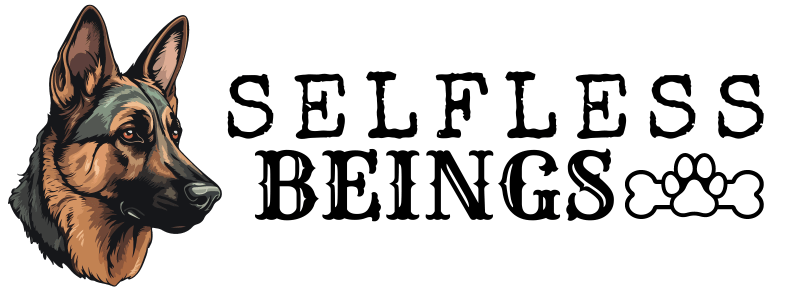
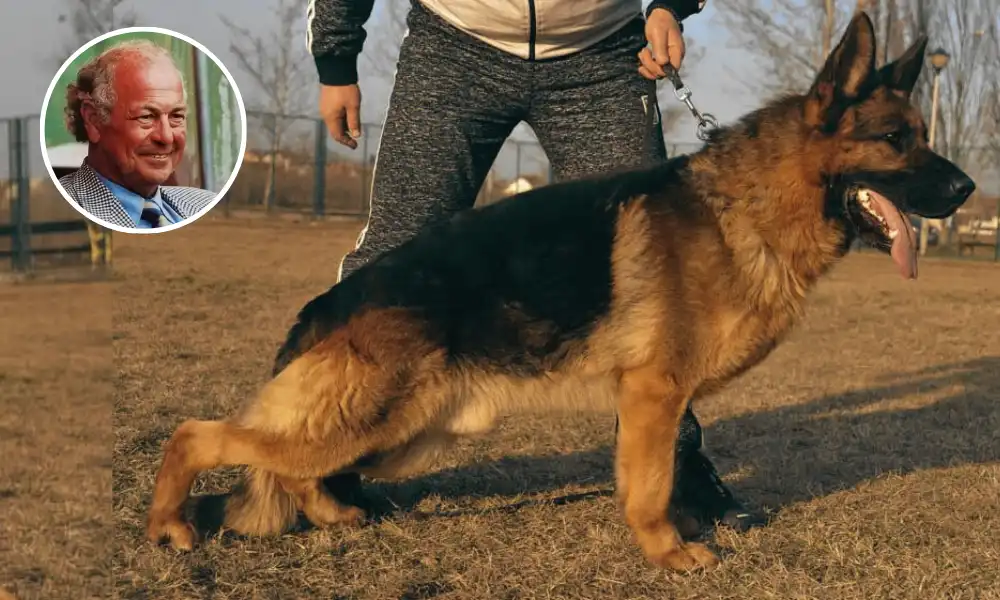
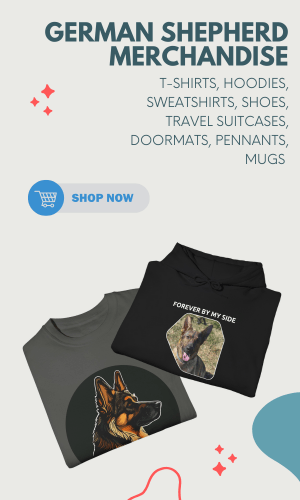

Leave a Reply